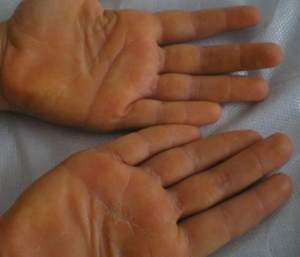

MedFriendly®


Yellow Skin
Yellow skin refers to any yellow coloring of the skin,
such as jaundice. This broad definition of yellow skin is
also known as xanthoderma. Any condition that causes
liver damage (e.g., liver cancer) can cause yellow skin
because the liver produced bile. Bile is a bitter, yellow-
green substance released from the liver that carries
away waste products. The bile contains a yellow-
orange substance called bilirubin. When too much
bilirubin builds up in the body due to liver damage,
yellow skin occurs. A less dangerous reason for yellow
skin is a build-up of too much carotene in the body.
FEATURED BOOK: Skin Rules: Top Secrets from a Top New York Dermatologist
Carotene is a pigment made by certain plants (notably carrots and sweet potatoes) but
cannot be made by animals. So eating too many carrots or sweet potatoes can result in
too much carotene in the body, resulting in yellow skin.
Yellow skin also refers to the occurrence of yellow colored patches in the skin that
resemble a condition known as xanthoma. However, whereas xanthoma takes the form of
yellow plaques or nodules on the skin, yellow skin does not. Plaques and nodules are
both areas on the body that appear different from other tissue, with nodules being more
swollen. In this sense of the word, yellow skin is also known as xanthochromia,
xanthoderma, cholesterodoma, xanthochroia, and xanthopathy.
"Where Medical Information is Easy to Understand"™















